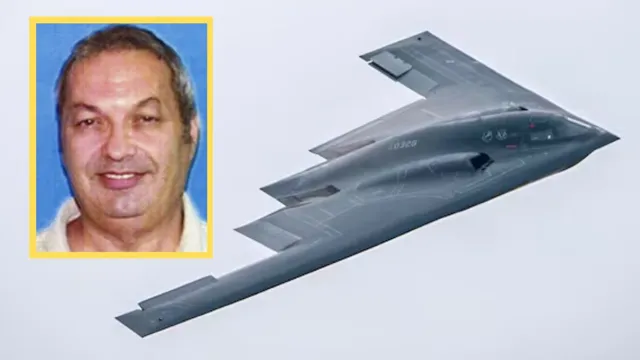- By Supratik Das
- Tue, 24 Jun 2025 01:47 PM (IST)
- Source:JND
In one of the most stunning espionage cases in American history, Indian-born aerospace engineer Noshir Sheriarji Gowadia, hailed as a genius behind America's stealth bomber effor,t was sentenced to 32 years behind bars for sharing top military secrets. Born in Mumbai in 1944, Gowadia was the key designer of the B-2 Spirit, the US Air Force's most advanced stealth bomber. But decades later, his life took a dark turn when he was apprehended in Hawaii for spying on behalf of foreign governments, including China, by leaking sensitive stealth propulsion information.
Who is Noshir Gowadia? The 'father of stealth exhaust' behind the B-2 Spirit
Gowadia immigrated to the US at 19 and became an American citizen in 1969. A year later, he joined Northrop (now Northrop Grumman), the firm tasked with designing the next generation stealth bomber in the wake of vulnerabilities revealed during the Vietnam and Yom Kippur wars. Employed by the secret "Blueberry Milkshake" program, Gowadia took close to 20 years to refine the B-2's infrared-suppressing exhaust system, a breakthrough that rendered the bomber nearly undetectable to radar and heat-seeking missiles. "The whole geometry came from me," he said in an interview once. His achievement contributed to the B-2 Spirit's legendary status, a 172-foot wingspan, capacity to carry nuclear or conventional payloads, and a 10,000 nautical miles range in a single refuelling.
Gowadia quit Northrop in 1986 on the grounds of poor health. He then established his own defence consulting business but lost his security clearance in 1997 following a dispute over a contract. Financial difficulties led, especially after he bought a 3.5 million USD luxury villa in Maui, Hawaii. In 2003, desperate for funds, Gowadia secretly collaborated with Chinese authorities. On trips made under aliases and using encrypted e-mails, he visited cities such as Chengdu and Shenzhen. U. officials later discovered that he had transferred stealth nozzle designs essential for the development of radar-evading cruise missiles similar to the B-2's technology. He was paid at least 110,000 USD, which he used to settle mortgage loans.
FBI Raid Reveals 500 Pounds of Classified Material
On October 13, 2005, federal officials stormed his Maui estate and took a cache of sensitive papers, hard drives, blueprints, and emails, more than 500 pounds of evidence. Customs and shipping forms indicated he had also tried to ship restricted defence materials under false labels. After a months-long investigation, the FBI indicted him under the Espionage Act and the Arms Export Control Act. In interrogations, Gowadia confessed, "On reflection, what I did was espionage and treason because I shared military secrets with the PRC (People's Republic of China)." His trial commenced in 2010 and took almost four months. His defense made the argument that the mutual material was previously declassified, but the judge dismissed it. "He violated his oath of allegiance to the United States," stated US District Judge Susan Oki Mollway. Gowadia was convicted on 14 of 17 counts, including conspiracy, money laundering, and unauthorized disclosure of national defence information. In 2011, he was sentenced to 32 years at the USP Florence ADMAX, a federal supermax prison in Colorado.
In June 2025, under Operation Midnight Hammer, seven US B-2 bombers were dispatched in a precision attack on Iran's most fortified nuclear sites at Fordow, Natanz, and Isfahan. The operation carried out from America without refueling stops demonstrated the lasting strength and use of stealth technology developed decades earlier.

